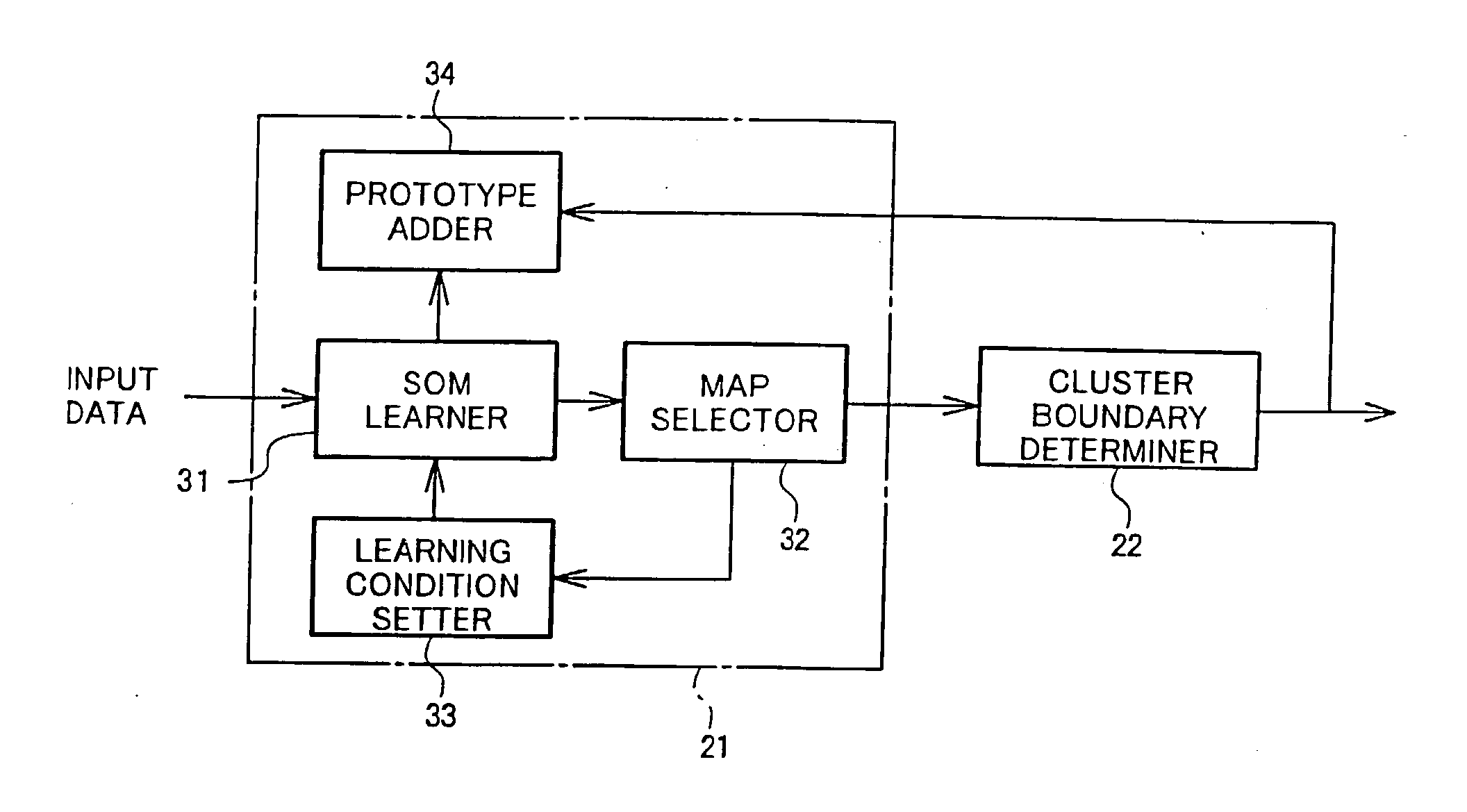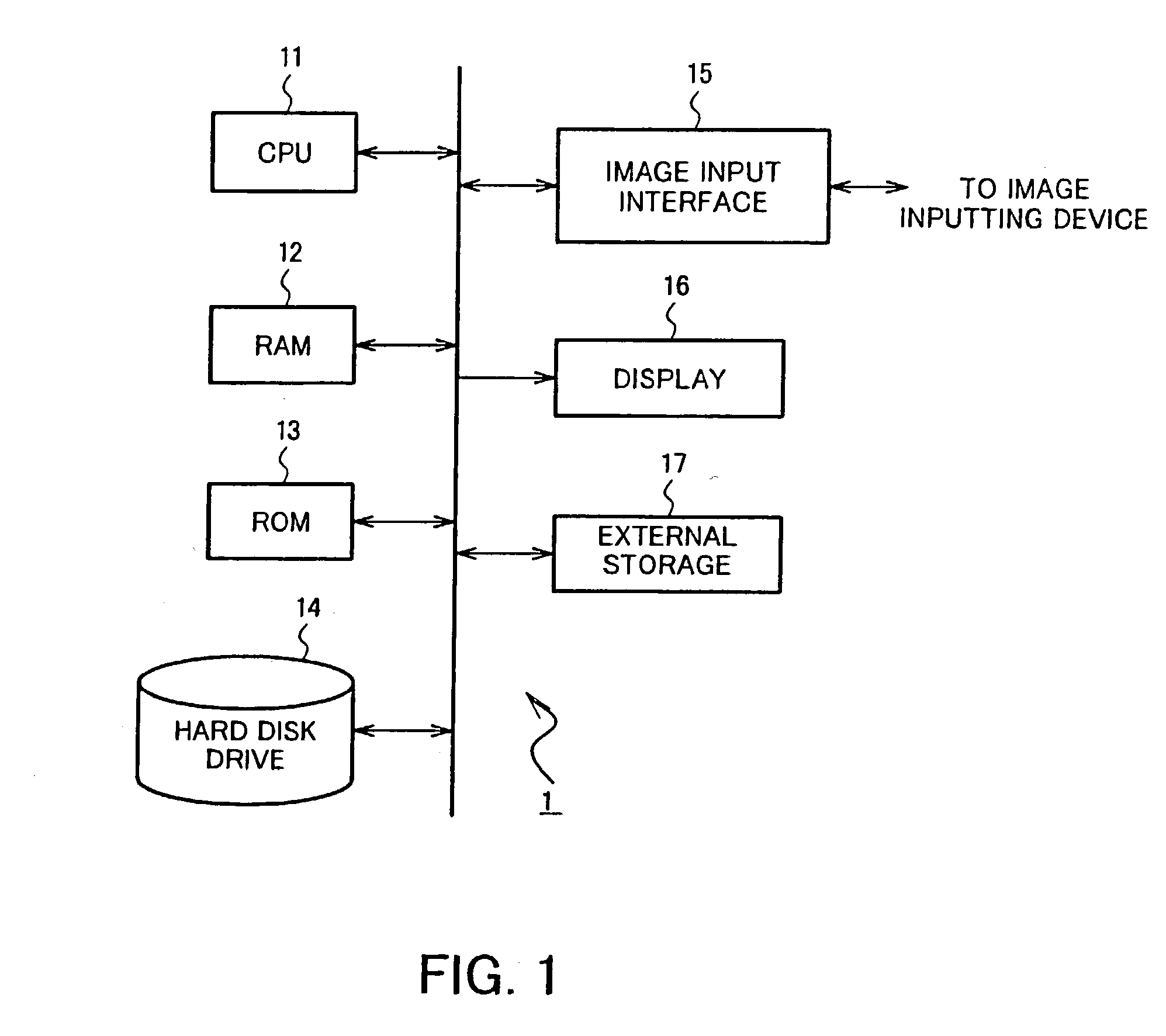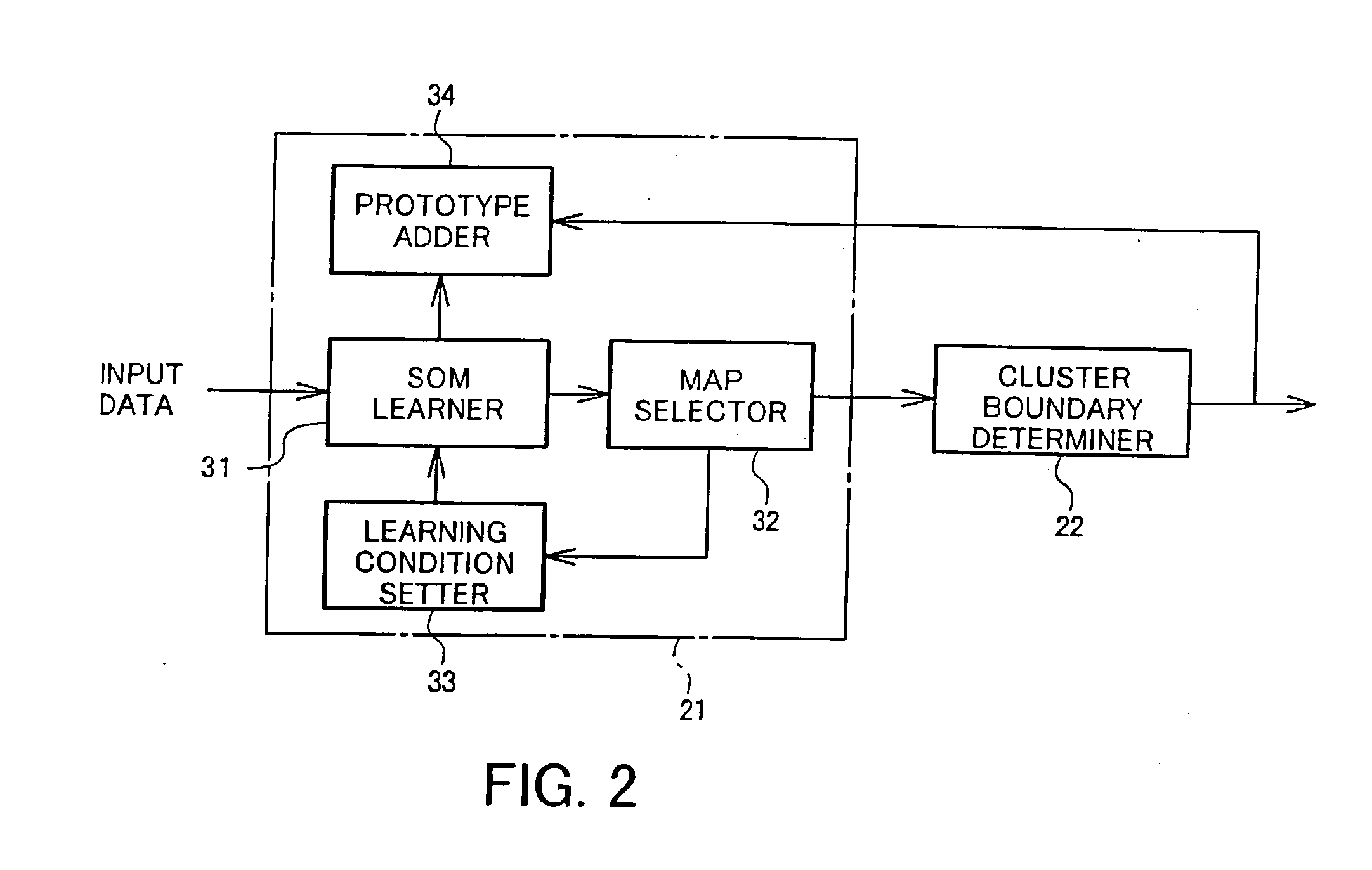Data classifier for classifying pattern data into clusters
a data classifier and data technology, applied in the field of data classifiers, can solve the problems of increasing learning time, erroneous classification, and not allowing immediate execution of autonomous data classification
- Summary
- Abstract
- Description
- Claims
- Application Information
AI Technical Summary
Benefits of technology
Problems solved by technology
Method used
Image
Examples
first embodiment
[0053] [First Embodiment]
[0054] A first embodiment will now be more specifically described wherein prototypes representing each input pattern data are generated for input pattern data, the prototypes are classified on a map, and the group of prototypes classified on the map are supplied for classification of input pattern data. A data classification program according to the present embodiment comprises a map generator 21 and a cluster boundary determiner 22. The map generator 21 comprises an SOM learner 31, a map selector 32, a learning condition setter 33, and a prototype adder 34. Here, each component is realized as a software module, but each component may alternatively be realized as a hardware such as a logical circuit. The processes at the CPU 11 will be described in more detail later.
[0055] [Details of Process]
[0056] Details of the data classification program to be executed by the CPU 11 will now be described with reference to FIG. 2. The map generator 21 creates a prototype ...
second embodiment
[0111] [Second Embodiment]
[0112] A second preferred embodiment of the present invention will now be described for a data classifier wherein a clustering process is directly applied to the pattern data. As show in FIG. 9, a data classification program according to the second embodiment comprises a cluster determiner 41 and a classifier 42.
[0113] The cluster determiner 41 operates during a learning process for clustering. The cluster determiner 41 executes a clustering process which will be described in more detail below to produce clustering results (commonly referred to as a "cluster filter") and outputs the clustering results to the classifier 42. The classifier 42 operates during when the actual classification process is executed. The classifier 42 stores the input clustering results (for example, stores in the hard disk drive 14), determines as to which cluster the input pattern data should belong referring to the cluster filter, and outputs the determination result as a classifi...
PUM
 Login to View More
Login to View More Abstract
Description
Claims
Application Information
 Login to View More
Login to View More - R&D
- Intellectual Property
- Life Sciences
- Materials
- Tech Scout
- Unparalleled Data Quality
- Higher Quality Content
- 60% Fewer Hallucinations
Browse by: Latest US Patents, China's latest patents, Technical Efficacy Thesaurus, Application Domain, Technology Topic, Popular Technical Reports.
© 2025 PatSnap. All rights reserved.Legal|Privacy policy|Modern Slavery Act Transparency Statement|Sitemap|About US| Contact US: help@patsnap.com



